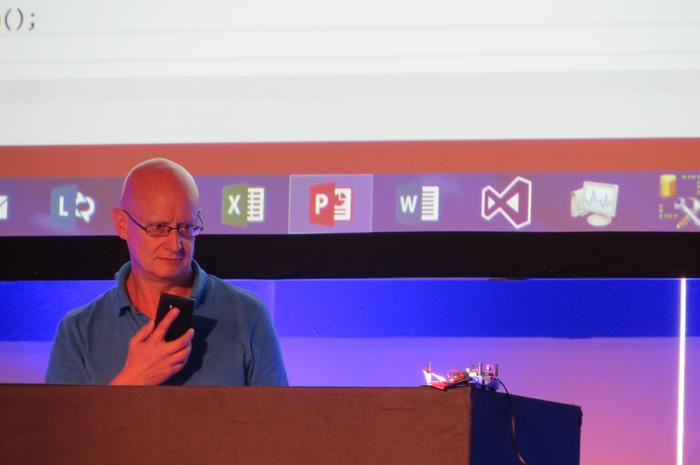TechEd: Developing for Internet of Things is 'cheap as chips'
- 27 October, 2014 13:42

This year's TechEd features a "Maker Den" where developers can play with the Netduino Plus 2 board to make a quick Internet of Things demo.
It's easier than ever to get started developing for the Internet of Things (IoT), said Microsoft .NET developer evangelist, Dave Glover.
"That whole bridge between inventing and the entrepreneur --someone who can take it to market -- that whole gap is closing," Glover said in a developer session today at the TechEd conference in Sydney.
Price is no longer a barrier to developing connected devices thanks to commoditisation, he said.
"This stuff is getting as cheap as chips, no pun intended," he said.
Microprocessors cost a $1 or less if you buy them in bulk, he said. Wi-Fi chips cost about $4.
"The hardware and the whole price point has changed so significantly," he said.
"It might have cost you tens of thousands of dollars ten years ago. Now it costs you a fraction to actually get up there and build it."
Also, open-source IoT-enabled boards including Netduino 2 Plus and Raspberry Pi, priced between $30 and $70, can be quickly implemented on a license- and royalty-free basis, he said.
Meanwhile, the cloud has brought great compute power without the need to build one's own infrastructure, he said. Charged on a demand basis, tapping the cloud can be very inexpensive, he said.
In addition, the advent of 3D printing has significantly brought down the price of prototyping, he said. And the cost of manufacturing in small amounts has also come down. A manufacturer in China might charge $200 to manufacture 100 units, he said.
It's also easier to access capital to fund a project due to the rise of Kickstarter and other crowdsourcing sites, he said.

Not only is it cheap to supply IoT tech, but demand for IoT tech is also growing due to an increasing hunger for information, Glover said.
Many businesses are eager to obtain real-time information they can use to operate more efficiently and productively, he said.
While IoT may present a great opportunity, Glover noted that it's still "a bit of a mystery" to many people, including developers.
To prove his point, he did an informal survey of the TechEd audience, asking who thought they could explain IoT to a friend at a barbecue. Few raised their hands.
"For me, the easiest way to think about it is it's the third wave of the Internet," Glover said.
The first two waves were the Internet of fixed devices and, currently, the Internet of mobile, he said.
IoT is "everything over and above mobile and fixed PCs, and that could be anything.'"
Adam Bender covers telco and enterprise tech issues for Computerworld and is the author of dystopian sci-fi novels We, The Watched and Divided We Fall. Follow him on Twitter: @WatchAdam
Follow Computerworld Australia on Twitter: @ComputerworldAU, or take part in the Computerworld conversation on LinkedIn: Computerworld Australia
